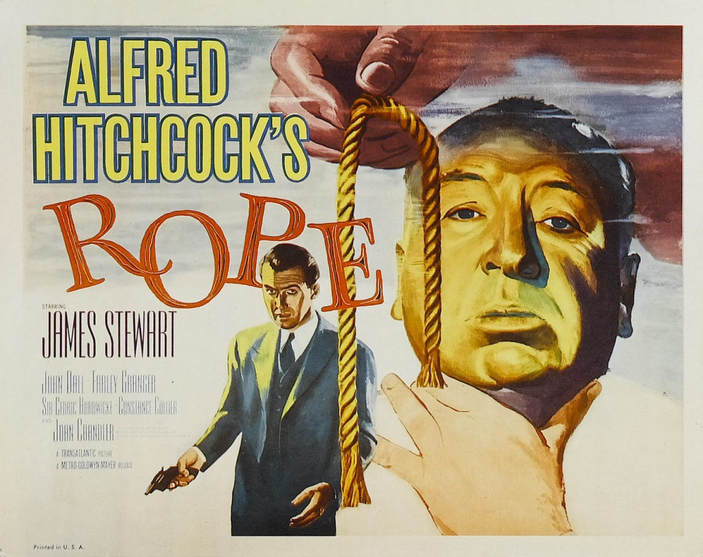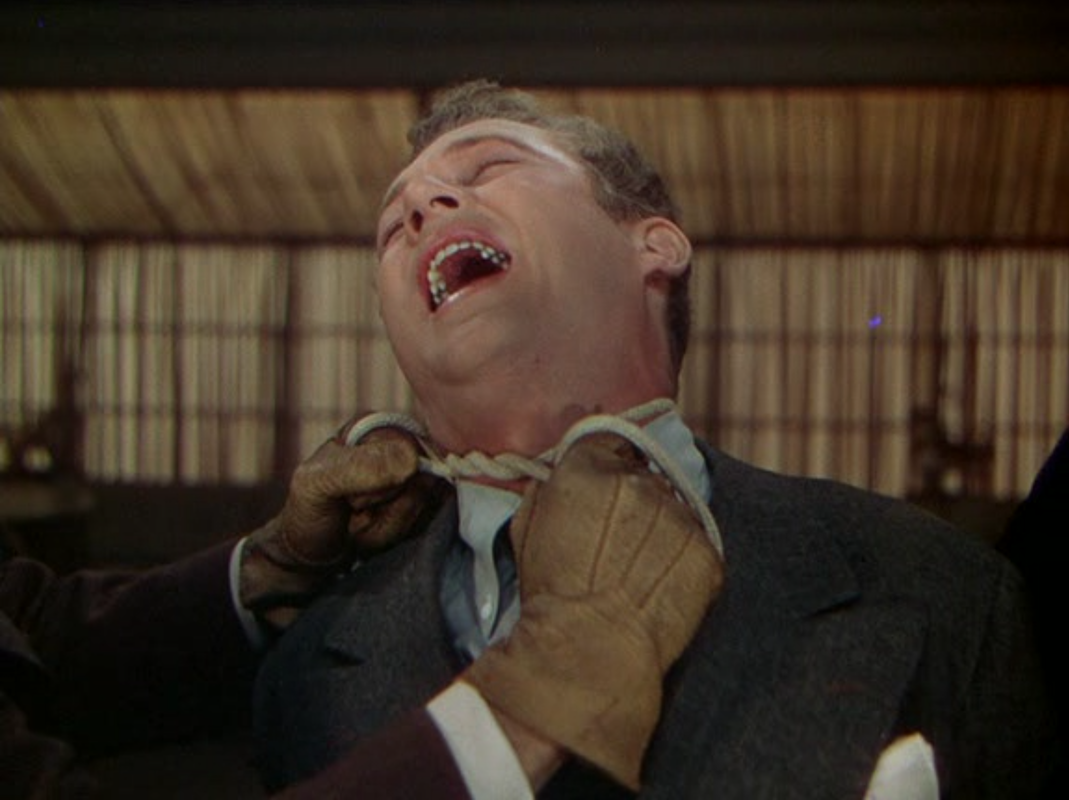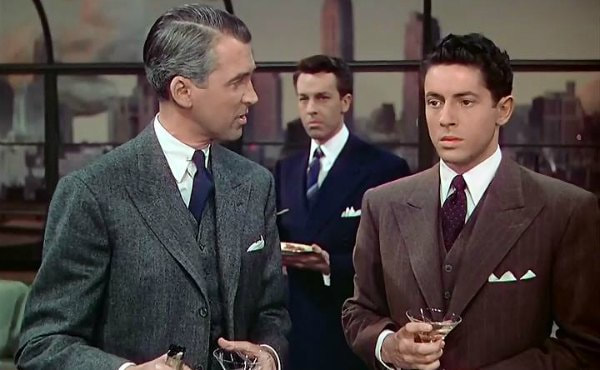|
David. We hear this name throughout Hitchcock's Rope. But we get only one glimpse of David -- while he's being strangled. As the camera tracks back, we see that the active strangler is Phillip, Brandon standing at his side holding David's body upright in a tight, steady grip. Both men wear gloves as a barrier between their victim and their touch. Once David is stashed away in the living room chest, we see no more of him. But we keep hearing his name: "David," spoken by Brandon, Phillip, Rupert, his father, friends, and potential fiancée.
Hitchcock's Rope follows a Gothic trope here, in that it constructs "David" as less a person than an idea, a body and thus a complex symbol: an object signifying other things. We've seen this in Edgar Allan Poe's work with names such as "Madeline," "Roderick," "Usher," "Ligeia," and the old man in "The Tell-Tale Heart," whose so-called friend reduces him to an object in focusing--with both curiosity and disgust--on his cloudy eye. We've seen this many times before in Hitchcock, as well, with names like "Mother," "Thorwald," "Madeleine," and "Charlie." So, what does "David" represent in Rope? One thing? Many things? Things that are out in the open and that go unnoticed? Things that are bubbling beneath the surface of this polite society of friends and family? Rope is so full of in-jokes around Brandon and Phillip's homosexuality, it would be too easy to say, simply: David is a representation of repressed homosexuality in an oppressively heteronormative society. In fact, the film associates murder and the impulse towards violence so clearly with homosexual sex and love, it risks charges of outright homophobia. These issues are barely hidden in the film, coming to a kind of fruition when Rupert tells Phillip and Brandon that David "could live and love as you never could." Spectators of the film may read it within or against such claims. But what happens when we turn the focus to David or "David"? Explore this question in relation Poe's "The Tell-Tale Heart." What does comparing the two works reveal about the significance of the old man in Poe and David or "David" in Rope as symbols? You may wish to revisit the film's ending speech by Rupert. You may also wish to draw comparisons to either "The Imp of the Perverse" or "The Black Cat," both of which we will discuss Wednesday.
44 Comments
For this week's Humanities forum, develop a motivated response to Rope inspired by the kind of sophisticated readings we saw in Doty and Savran. Your post should include at least one quotation from one of this week's texts and one form any other Humanities reading we've read from the beginning of the term until now. Consider "queering" psychoanalytic concepts that we've encountered such as death drive, narcissism, sadism-masochism, masquerade, the Oedipus complex, phantasy, the phallus, gaze, superego, or jouissance. Develop a provocative analysis of Rope, well-supported with evidence, that allows us to see the film AND the concept in a new light. Your post is due before class on Monday. To remember character names, always refer to IMDB. The Rope script (along with all Hitchcock scripts) is also easily accessible online.
To help motivate your response, you may consider the following quotation from Doty's "Queer Hitchcock" as a jumping off point (one of many in that essay): "For the past two decades, most ideological analyses of Queer Hitchcock have taken Wood's middle road, which considers how the ambiguous coding of non -normative gender and sexuality in Hitchcock films frequently allows for readings that recognize the potential for homophobia (or a less specific queerphobia) along with the potential for readings of queer characters and narratives that might, for example, make a case for the attractive (queer) villain, or for a film such as Rope being more about how homophobic, heterosexist, patriarchal culture perverts Brandon and Phillip than it is about how queerness leads to psychopathology and murder" (Doty, 481). Good luck on your posts! Please mio if you have any questions. |
INSTRUCTIONSPlease respond in the Comments section. To see this section, just click the red "comments" line). To create a new response, use the "Leave a Reply" box. |



